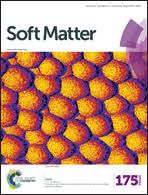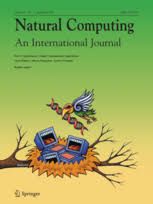Publications
The mechanical properties of a cell-based numerical model of epithelium
Abstract
In this work we use a computational cell-based model to study the influence of the mechanical properties of cells on the mechanics of epithelial tissues. We analyze the effect of the model parameters on the elasticity and the mechanical response of tissues subjected to stress loading application. We compare our numerical results with experimental measurements of epithelial cell monolayer mechanics. Unlike previous studies, we have been able to estimate in physical units the parameter values that match the experimental results. A key observation is that the model parameters must vary with the tissue strain. In particular, it was found that, while the perimeter contractility and the area elasticity of cells remain constant at lower strains (~20%), they must increase to respond to larger strains (>20%). However, above a threshold of 50% extension, the cells stop counteracting the tissue strain and reduce both their perimeter contractility and area elasticity.
Authors: 
Article NACO
Influence of cell mechanics and proliferation on the buckling of simulated tissues using a vertex model
Abstract
Tissue folding is a frequently observed phenomenon, from the cerebral cortex gyrification, to the gut villi formation and even the crocodile head scales development. Although its causes are not yet well understood, some hypotheses suggest that it is related to the physical properties of the tissue and its growth under mechanical constraints. In order to study the underlying mechanisms affecting tissue folding, experimental models are developed where epithelium monolayers are cultured inside hydrogel microcapsules. In this work, we use a 2D vertex model of circular cross-sections of cell monolayers to investigate how cell mechanical properties and proliferation affect the shape of in-silico growing tissues. We observe that increasing the cells contractility and the intercellular adhesion reduces tissue buckling. This is found to coincide with smaller and thicker cross-sections that are characterized by shorter relaxation times following cell division. Finally, we show that the smooth or folded morphology of the simulated monolayers also depends on the combination of the cell proliferation rate and the tissue size.
Authors: 
Master Thesis
Modélisation Numérique 3D d'un Tissu Épithélial
Abstract
L'épithélium ou tissu épithélial est l'un des quatre types de tissus basiques existant chez les animaux, avec les tissus conjonctifs, musculaires et nerveux. Lors du développement d'un embryon, une série d'organes, ayant une morphologie, une taille et une fonctionnalité spécifique, nait, et cela même face à des perturbations externes importantes. Étant donné que tous ces organes ne dérivent que d'une seule cellule appelée zygote, des mécanismes robustes sont nécessaires. Ces mécanismes exigent la coordination de propriétés biologiques, telles que la croissance, la prolifération et la mort cellulaire, dépendantes de la mécanique des cellules et de l'adhésion cellulaire. De plus, à cause de leur complexité, le fonctionnement de ces mécanismes n'est pas encore compris et pose un défi pour la biologie du développement.
L'objectif de cette étude est de proposer une ou plusieurs solutions de modélisations numériques 3D du tissu épithélial.
Authors: 


